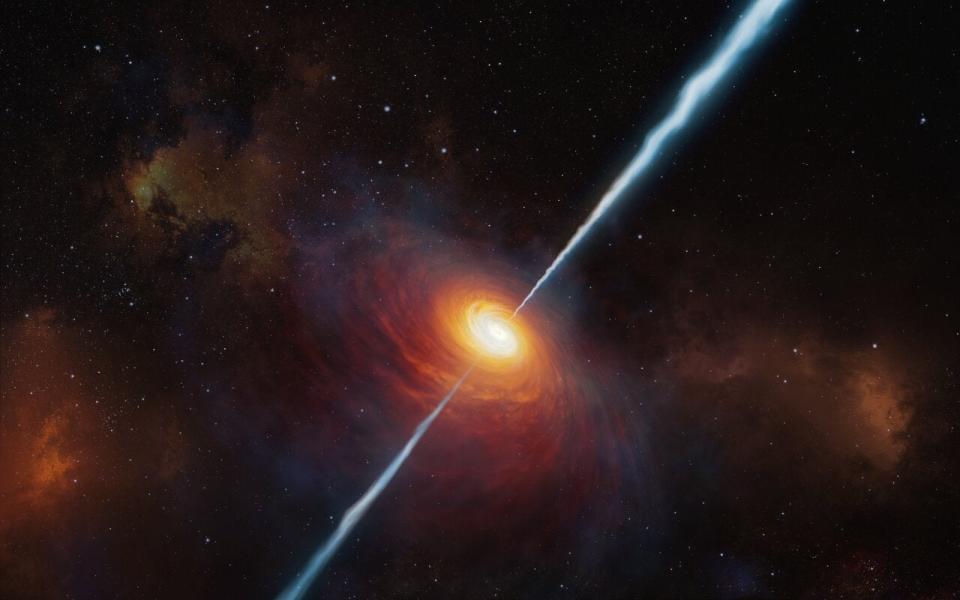Scientists detect radio blast coming from further away in space than ever before

Scientists have discovered the most distant radio blast ever known.
The blast came from a quasar that is so far away that its light took 13 billion years to arrive at Earth.
That means that the signals detected by scientists are coming from a time when the universe was just 780 million years old.
More distant quasars have been found in the past. But the new one is notable because it is “radio-loud” – it is the first time that radio jets have been able to be detected from such a distant object.
Quasars are among the brightest objects in the universe. They are found at the centre of some galaxies nd are powered by supermassive black holes – when the surrounding gas is eaten by the black hole, it throws out energy that travels across the universe and can be studied by scientists.
A small minority of quasars are “radio-loud”, or have jets that throw out radio emissions. Only around 10 per cent of quasars belong to that category, but they are especially useful because they shine so brightly to scientists.
Even as scientists have continued to find vast numbers of objects from the first billion years of the universe, particularly over the last decade, finding those that sent out radio signals has proven much more difficult.
The quasar, named P172+18, is also powered by one of the most hungry black holes ever seen. The supermassive black hole is about 300 million times more massive than our Sun, and is consuming material so fast that it is among the fastest-growing ever observed.
“I find it very exciting to discover ‘new’ black holes for the first time, and to provide one more building block to understand the primordial Universe, where we come from, and ultimately ourselves,” said Chiara Mazzucchelli from the European Southern Observatory, who was one of the scientists who found the object.
Scientists were able to inspect the quasar in detail after seeing it using the the Magellan Telescope at Las Campanas Observatory in Chile. After detecting the radio blast, they were able to recognise it as coming from a distant quasar.
Further research – using a wide array of equipment, including the ESO’s Very Large Telescope – allowed scientists to study the quasar and black hole in further detail, including seeing the latter’s huge and fast-growing mass.
“As soon as we got the data, we inspected it by eye, and we knew immediately that we had discovered the most distant radio-loud quasar known so far,” said Eduardo Bañados of the Max Planck Institute for Astronomy in Germany, who led the work alongside Dr Mazzucchelli.
The scientists think that their record might not stand for very long, as they go on to discover other radio-loud quasars even deeper within the universe. “This discovery makes me optimistic and I believe — and hope — that the distance record will be broken soon,” said Bañados.
A paper describing the finding is titled ‘The discovery of a highly accreting, radio-loud quasar at z=6.82’ and will be published in The Astrophysical Journal.
Read More
Scientists find most distant quasar ever discovered

 Yahoo Finance
Yahoo Finance 